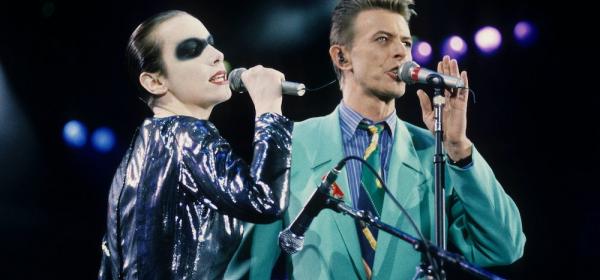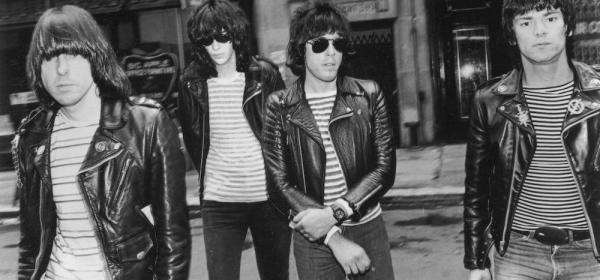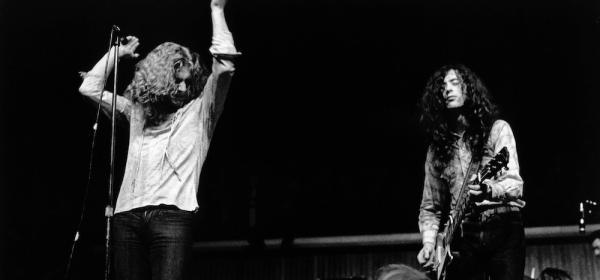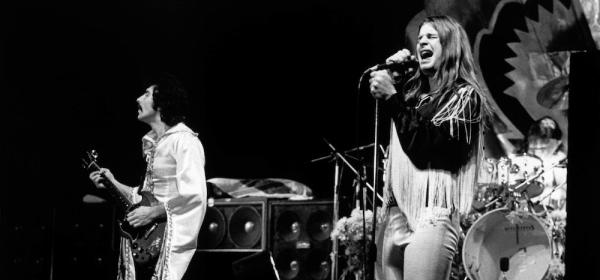
Ramones - Part Three: The Legacy
Ramones might be one of the most iconic rock records of all time, but its 1976 release was met with indifference. Originally peaking at an utterly dismal 111 in the Billboard Chart, the 40th anniversary of the Ramones’ first album coincides with it being named by Rolling Stone as the greatest punk album of all time.
A freshly unveiled Ramones box set containing unreleased material adds a new dimension to these 29 minutes of pivotal rock, but the premature deaths of all four founding Ramones cast a shadow on the celebrations.
The Ramones’ position in rock in 2016 is a far cry from the band’s earliest days. Linda Ramone, the wife of late guitarist Johnny Ramone, says at the time of their debut the band’s income was limited - and endorsements were non-existent.
“No one gave the Ramones anything, ever,” Linda says. “Not one pair of jeans or one leather jacket their entire career. It was a different time then though, don’t forget. People weren’t endorsing products then – and the ones who might have been were selling billions of records. But not one Ramones endorsement deal.”
We’ve since seen Ramones lunch boxes, Converse sneakers and onesies, but the first ad campaign featuring the Ramones’ music didn’t arrive until a 1991 Budweiser commercial utilised Blitzkrieg Bop.
In 1994 they recorded three jingles for the Steel Brewing Company brewery: “Fill My Cup,” “High Gravity Lager” and “Gimme My Steel Reserve.” This would have been a pretty major payday for the band at a time when record sales weren't exactly blooming, and it was done in an era when licensing material for a commercial was still considered selling out.
“I think the first Ramones commercial was for beer, which Johnny didn’t mind because he drank beer. The cheque came in the mail and he was like, ‘Oh my God - this is free money! I didn’t even have to leave the house.’ He couldn’t believe he could sit in the house and still make money from commercials. Johnny would never do anything which didn’t fit with the Ramones and we try to keep that up – we never change the lyrics and you choose commercials which fit with the band. People complained we did a Coppertone commercial, but Johnny wore Coppertone growing up! Everyone did in Queens. There’s always someone complaining – they complain if you sell T-shirts and they complain if you sell records, but you have to laugh at it all. I love the fact we make great Ramones merch.”
Linda says Johnny always dreamed of retiring from music early so he could become a film director, but the Ramones’ commercial failure blighted his plan. Thankfully, by the time he succumbed to prostate cancer in 2004, life had become financially comfortable for the guitarist.
“Growing up in Queens and being a construction worker, having a million dollars sounds like a billion dollars, so once he felt like he’d made that kind of money and still had money coming in, he felt very comfortable in the amount of money he made.
“Johnny was always frugal, but he was never cheap. He’d buy me flowers, but he’d buy carnations. I’d say, ‘Why’d you buy me carnations? I don’t like carnations’ and he’d say, ‘Well they were cheaper than the tulips!’. He’d go out of his way to buy the flowers, but he always thought the way he did things was the right way and you could never convince him otherwise.”
In 1993, the Ramones’ appearance in a hilarious scene in The Simpsons exposed their punk sounds to a whole new generation. As a comic and cartoon fan, Johnny was thrilled to appear in The Simpsons and utter the words “Up yours, Springfield!”.
“He loved The Simpsons, so that was the craziest thing ever,” Linda says. “They shot it right by our house when we lived in Chelsea [Manhattan], so Johnny either walked there or took a cab. They gave him a SAG [Screen Actors Guild] card for being on the show, they gave him a Simpsons cel and they gave him a Simpsons jacket. Everywhere we went in the city, people would say, ‘Hey Johnny! I saw you on The Simpsons!’. It was a huge highlight for him. He would say, “It was hardly any work - I walked around the block, I was there for a few hours and everybody saw it!’. The jacket and the cel are in the Grammy Museum, but giving those two away were among the hardest things for me. With his guitars they are easier for me to give [to the museum or Hall Of Fame], since Johnny didn’t care so much about guitars. He was more sentimental about things like The Simpsons jacket, The Simpsons cel which I had up in the kitchen or his cadet belt from when he was in military school.”
What next for the Ramones’ re-releases? It was one of Johnny’s final wishes to oversee a new mix of 1980’s End Of The Century to minimise producer Phil Spector’s flourishes, much like The Beatles dispatched with Let It Be… Naked. Linda doesn’t think we’ll be hearing End Of The Century in a stripped and remixed form anytime soon.
“What happened was that Johnny was good friends with Rick Rubin - I’m still friends with Rick,” she says. “Johnny asked Rick to re-produce End Of The Century and we looked into it, but it was written into Phil’s contract we couldn’t do anything for a certain amount of years. I don’t know if that time period is up, but now that Johnny is not here, I don’t know. Johnny hated his guitar sound on End Of The Century… Or, as he said, ‘What guitar sound?’. I was dating Joey at that time of End Of The Century and Phil was very much into Joey. When they recorded Baby, I Love You, the only one in the studio was Joey. Johnny isn’t on it, Dee Dee isn’t on it and [drummer] Marc Bell isn’t on it - all The Ramones had left the day before.”
The sessions for End Of The Century have entered rock folklore as Phil Spector’s last roll of the dice as an iconic producer. It was the final full album Spector produced before his conviction of the murder of Lana Clarkson in his LA mansion in 2003. When the erratic Spector pulled a gun on Johnny after he threatened to walk out during the recording of Rock And Roll High School, the guitarist sneered, “What are you going to do, Phil, shoot me?”.
“Phil was crazy, but he was no crazier than anyone else we hung out with at that point,” Linda, who was in the studio for a number of the sessions, says. “I didn’t think he’d ever kill anyone. He was an odd person, that’s for sure. He was always screaming, always yelling, but he could be funny, too.”
The four key players may be gone, but Ramones lives on. Released at a time when disco chick Maxine Nightingale’s "Right Back Where We Started From", Queen’s "Bohemian Rhapsody" and the creepy Dr Hook’s "Only Sixteen" were jostling for the top spot in the US chart, the debut from a quartet of dirty downtown New Yorkers sounded like nothing else on the radio. In half an hour, Ramones changed the world for aspiring musicians and punk fans alike. The album still sounds fresh and inspiring 40 years on.
“That’s what The Ramones were all about – inspiring people,” Linda concludes. “Johnny is one of the most influential guitarists of all time because he convinced people to get up and get out there and play a guitar. That’s important!”
The 40th anniversary deluxe edition of Ramones, featuring the original album, live tracks, demos and unreleased material, is available to order now.
Read part one of this interview with Linda Ramone here.
Read part two of this interview with Linda Ramone here.
- Scott McLennan








